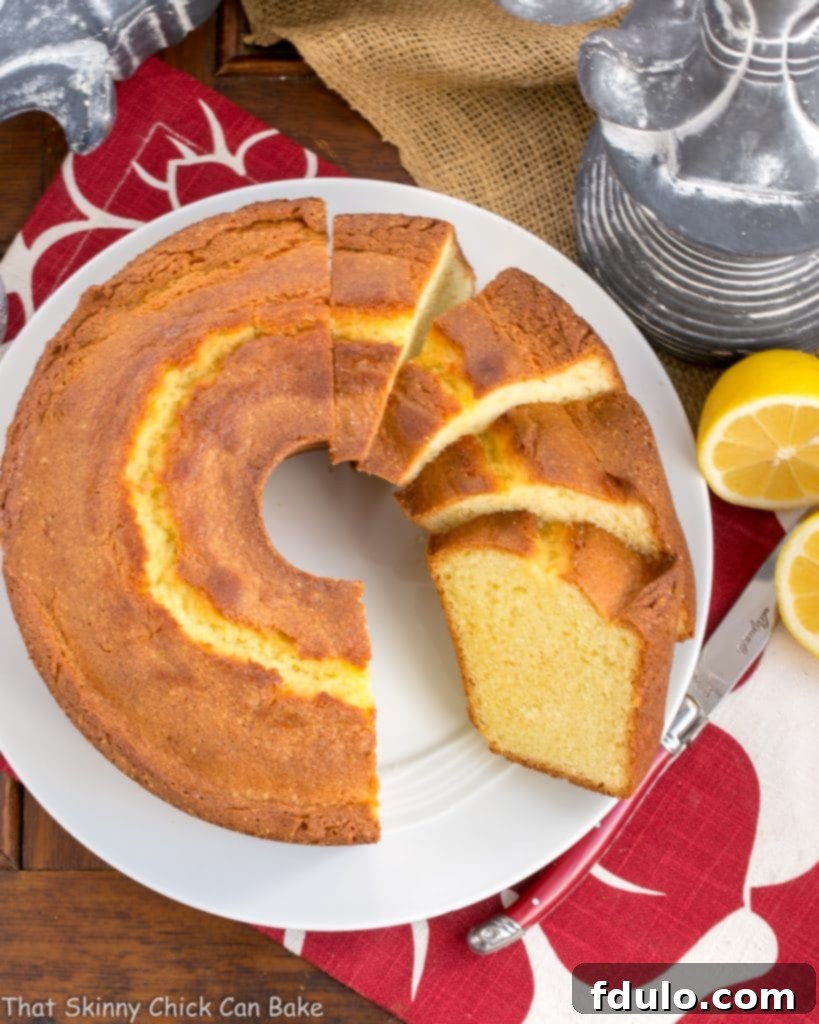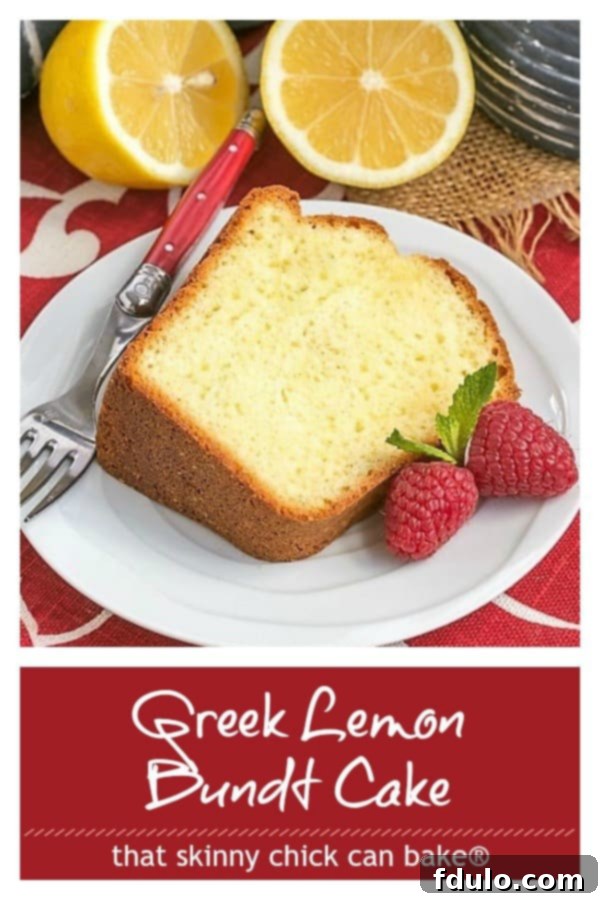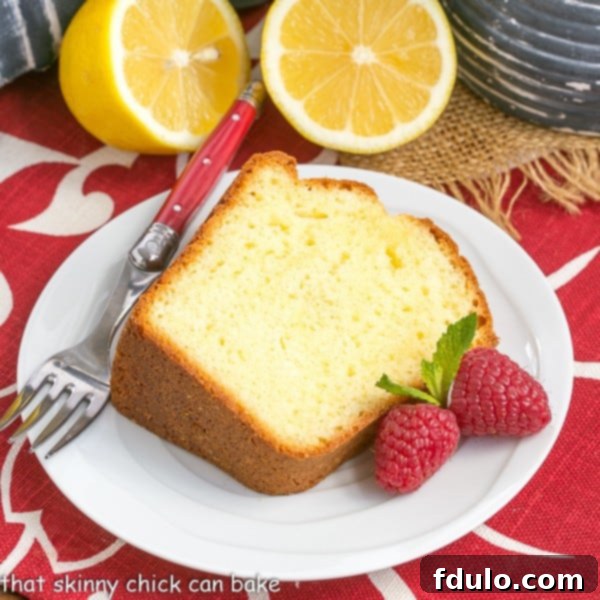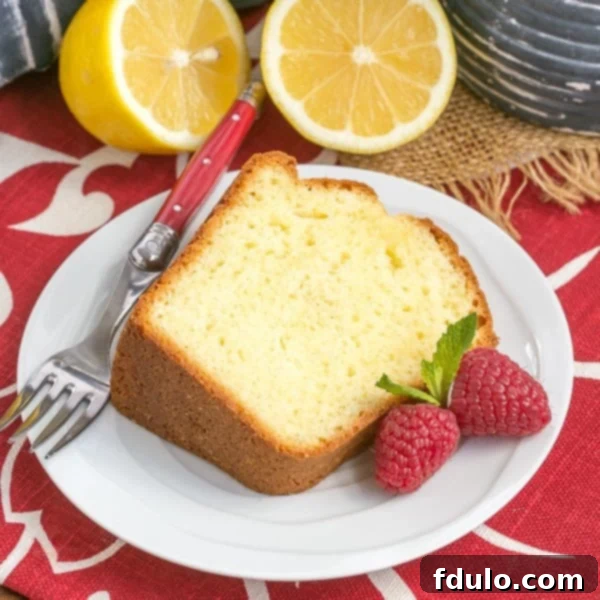Welcome to a culinary journey that celebrates the vibrant zest of lemons and the tender embrace of Greek yogurt, culminating in the most exquisite Greek Lemon Bundt Cake. This recipe isn’t just about baking a cake; it’s about crafting a delightful experience, a perfect centerpiece for your afternoon tea or a refreshing dessert to conclude any meal. With its irresistibly fine crumb and a glorious double burst of citrus flavor, this homemade lemon cake promises to become an instant favorite, earning rave reviews from everyone who tastes it.
The secret to its remarkable moisture and exceptional tenderness lies in the inclusion of luscious Greek yogurt. This ingredient elevates the cake from merely good to truly spectacular, ensuring every bite is rich, moist, and utterly satisfying. Prepare to impress your guests and delight your family with a cake that’s both elegantly simple and profoundly delicious.

The Allure of the Greek Lemon Bundt Cake
My culinary adventures with Greek cuisine began in my mother’s kitchen, a place filled with aromas and tastes that were, at times, both intriguing and challenging to a young palate. While dishes like her lemon soup and the fragrant pork shish kebabs, marinated in a bright mix of lemon juice, garlic, and olive oil, were often met with enthusiasm, some traditional offerings, like the infamous moussaka, proved to be a harder sell. Eggplant and lamb were novelties to my sisters and me, and let’s just say, the announcement of moussaka on the menu sometimes sparked a minor family revolt!
However, it was the desserts that truly captured our hearts and minds, forever changing our perception of Greek food. My mom’s incredibly tasty Baklava recipe was a revelation, a symphony of sweet, nutty, and flaky layers that left us craving more. It was this discovery of Greek sweets that inspired my own dessert-focused creations. Today, rather than challenging the palate of my notoriously picky husband with an eggplant-centric dish, I often turn my attention to baking. His taste buds, much like those of “immature school girls” (shhh, don’t tell him I’m saying that!), lean heavily towards the sweet and comforting, making a delightful dessert the perfect choice every time.
Why Greek Yogurt is a Game-Changer in Cake Baking
Drawing on those cherished memories of my mother’s kitchen, I found myself consistently gravitating towards citrus cakes, always seeking that extra “Greek boost” that only thick, creamy yogurt can provide. There’s an undeniable magic that occurs when yogurt is incorporated into a recipe, transforming ordinary ingredients into something truly special. Its versatility is remarkable, performing different roles with equal excellence.
In savory applications, like marinades, the lactic acid in yogurt works wonders, gently tenderizing meats and infusing them with moisture, resulting in succulent, flavorful dishes. But its contributions to baking are equally profound. When added to cakes or muffins, Greek yogurt imparts a luxurious richness and depth of flavor that is hard to replicate. It actively aids the baking soda in its leavening process, contributing to a beautifully risen, light texture. Most importantly, it is the key to achieving that coveted, ultra-tender crumb that makes a cake melt in your mouth. The slight tang of the yogurt also provides a wonderful counterpoint to the sweetness, creating a perfectly balanced flavor profile. Opting for full-fat, plain Greek yogurt is usually best, as it offers the richest texture and flavor without added sugars or artificial ingredients that might interfere with your baking.
While this particular recipe might not be a centuries-old authentic Greek confection, it is undeniably my heartfelt homage to the Hellenic fondness for bright, zesty lemons and, of course, to the iconic Bundt cake. The name “Bundt” itself evokes a sense of charm and nostalgia, perhaps even a chuckle for those familiar with the unforgettable Bundt (“Boont”) cake scene from a certain classic movie. This homemade lemon cake, with its Greek-inspired twist, proved to be an absolutely excellent choice, blending tradition with a modern touch of culinary innovation. It’s a testament to how simple ingredients, thoughtfully combined, can create a truly memorable dessert experience.

Achieving Bundt Cake Perfection: Essential Tips for Success
There are few kitchen frustrations quite as disheartening as flipping over a beautiful Bundt cake, only to have large chunks remain stubbornly stuck in the pan. It’s a common baking woe, especially when you’re preparing a dessert for company! But fear not, with a few crucial tips and tricks, you can ensure your Bundt cake releases perfectly every single time, showcasing its intricate design without a single tear.
- Assess Your Bundt Pan’s Condition: The age and material of your Bundt pan play a significant role. If your pan is non-stick, be aware that over time, the non-stick coating can wear off, particularly with repeated use and washing. If you notice scratches, dull spots, or areas where food has consistently stuck in the past, it might be a sign that the coating is compromised. For older or well-used pans, meticulous preparation is key. However, if you consistently face sticking issues despite careful greasing, it might be time to invest in a new, high-quality pan. A good pan is a baker’s best friend!
- Master the Art of Greasing and Flour: This step is non-negotiable. To create an effective barrier between the cake batter and the pan, you must generously grease and flour every nook and cranny. Use a solid shortening, softened butter, or a non-stick baking spray specifically designed for baking, which often contains flour, like Baker’s Joy. If using shortening or butter, use a pastry brush or your fingertips to ensure a thin, even coat over the entire interior surface, paying extra attention to the fluted details. Then, dust with flour, tapping the pan and rotating it to distribute the flour evenly, before tapping out any excess. If using a spray, apply it thoroughly right before you add the batter. Applying it too far in advance allows the oil to settle and can lessen its effectiveness, leading to sticking.
- The Critical Cooling Period: Patience is a virtue in Bundt cake baking. Once your cake is out of the oven, resist the urge to immediately flip it. Instead, let it rest on a wire cooling rack in the pan for about 10-15 minutes. This crucial resting period allows the cake to firm up slightly and contract away from the sides of the pan as it cools, making it much easier to release cleanly. If you try to release it too early, the cake might still be too delicate and fall apart. Conversely, waiting too long can cause the sugars in the cake to cool and “glue” it to the pan, making release equally challenging.
- The Gentle Release Technique: After the optimal cooling time, place your cooling rack directly over the top of the Bundt pan. Holding both the pan and the rack firmly, swiftly and confidently invert them together. Give the pan a gentle shake back and forth or a slight tap on the counter to encourage the cake to loosen. You should feel or hear the cake release. Lift the pan slowly; if it doesn’t come off easily, replace it and try another gentle tap before lifting again.
- PRO-Tip: Salvaging a Disastrous Release: Even with the best intentions, sometimes a Bundt cake just doesn’t cooperate. Don’t despair! A torn or broken cake is still delicious. Instead of discarding it, get creative. Use the cake pieces to construct a beautiful and decadent trifle, layering them with whipped cream, fresh fruit, and perhaps a lemon curd. Alternatively, create individual parfaits for an elegant and effortless dessert. No one needs to know your Bundt cake had a little “personality”!

Serving Suggestions and Flavor Variations
This Greek Lemon Bundt Cake is truly a star on its own, but a few simple additions can elevate it further. For a simple yet elegant finish, dust it lightly with powdered sugar. If you desire an extra layer of lemon flavor and a beautiful sheen, consider drizzling a tangy lemon glaze over the cooled cake. A mixture of confectioners’ sugar and fresh lemon juice works perfectly. For a vibrant touch and contrasting texture, serve slices with fresh mixed berries – raspberries, blueberries, or sliced strawberries all pair wonderfully. A dollop of sweetened whipped cream or a scoop of vanilla bean ice cream adds a luxurious creaminess that complements the zesty cake.
Feeling adventurous? While lemon is magnificent, this base recipe is also highly adaptable. Consider swapping out some of the lemon zest for orange or lime zest for a different citrus experience. Add a touch of almond extract to the batter for a subtle nutty note that pairs well with lemon. You could also fold in some poppy seeds for a classic lemon poppy seed variation. For a touch of Greek flair, a hint of mastic or mahlab could be added, though these are more specialized ingredients. No matter how you choose to serve or adapt it, this moist and flavorful Bundt cake is guaranteed to be a hit.
More Citrus Recipes You’ll Love:
- Key Lime Pie Cookies from Grandbaby Cakes
- Swedish Orange Sweet Buns from Barbara Bakes
- Pink Lemonade Cupcakes
- Easy Lemon Bundt Cake
- Lemon Madeleines
- Raspberry Topped Lemon Souffle
- More Dessert Recipes


Greek Lemon Bundt Cake
20 minutes
1 hour
1 hour 20 minutes
12 servings
A lovely lemon cake made with Greek yogurt, offering a moist, tender crumb and a bright citrus flavor.
Rated 5 out of 5 stars by 20 reviewers.
Ingredients
- 3 cups cake flour
- 1 teaspoon baking soda
- 1/4 teaspoon salt
- 6 eggs
- 2 cups white sugar, divided
- 2 teaspoons finely grated lemon zest
- 1 cup butter (2 sticks), at room temperature
- 1/2 teaspoon vanilla extract
- 2 tablespoons fresh lemon juice
- 1 cup plain Greek yogurt (full-fat recommended, not fat-free)
Instructions
- Preheat your oven to 350ºF (175ºC). Generously spray a 10-inch Bundt pan with a non-stick baking spray that contains flour, such as Baker’s Joy, ensuring all crevices are coated.
- In a medium bowl, whisk together the cake flour, baking soda, and salt. Set this dry mixture aside.
- Separate the eggs, placing the whites in a large, clean mixing bowl and the yolks in another medium bowl. Beat the egg whites with an electric mixer until soft peaks begin to form.
- Gradually add 1/2 cup of the white sugar to the egg whites, continuing to beat until stiff, glossy peaks form. Set the meringue aside.
- In a separate medium bowl, combine the remaining 1 1/2 cups of sugar with the finely grated lemon zest. Use your fingertips to rub the lemon zest into the sugar until fragrant, ensuring the lemon oils are released and infused into the sugar.
- Add the softened butter to the lemon-infused sugar and cream them together with an electric mixer until light and fluffy. Beat in the egg yolks, followed by the vanilla extract and lemon juice, mixing until well combined and fluffy.
- Alternately add the flour mixture and the plain Greek yogurt to the egg yolk mixture, beginning and ending with the flour mixture. Mix on low speed until just combined after each addition, being careful not to overmix.
- Gently fold in the reserved beaten egg whites into the batter using a spatula, until no streaks of white remain. Pour the cake batter evenly into your prepared Bundt pan. If needed, use an offset spatula to level the top of the batter.
- Bake in the preheated oven for 50 to 60 minutes, or until a wooden skewer or toothpick inserted into the center of the cake comes out clean.
- Allow the cake to cool in the pan on a wire rack for exactly 10 minutes. After 10 minutes, carefully invert the pan onto the wire rack to fully release the cake and let it cool completely before glazing or serving.
- Serve slices of this delightful Greek Lemon Bundt Cake with fresh berries and a dollop of sweetened whipped cream, if desired, for an extra special treat.
Nutrition Information:
Yield: 12
Serving Size: 1 slice
Amount Per Serving:
Calories: 437
Total Fat: 18g
Saturated Fat: 11g
Trans Fat: 1g
Unsaturated Fat: 6g
Cholesterol: 135mg
Sodium: 315mg
Carbohydrates: 61g
Fiber: 1g
Sugar: 34g
Protein: 8g
